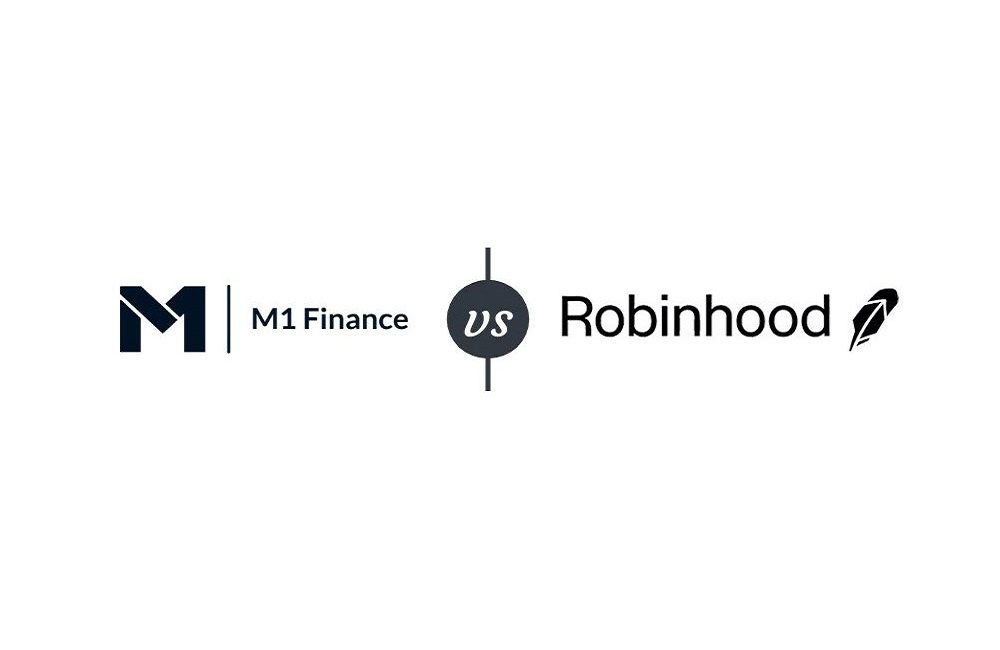M1 Finance and Robinhood are leading online brokers that both allow you to make commission-free trades on stocks and other securities. M1 has advantages in terms of Robo-advised, algorithmic investing. Robinhood is superior when it comes to the variety of securities available to self-directed investors. Let’s compare M1Finance vs Robinhood.
M1 Finance
M1 Finance is an American financial services company that refers to itself as “The Finance Super App”, and it is not an empty boast.
Founded in 2012, it has been available to the public since 2015 and so far, has accumulated more than $6 billion in assets under management.
As an amalgamation between a Robo-Advisor and a traditional financial advisor, it delivers commission-free trading making this simple to use for less experienced investors. It takes minimal time to check your investments, making it ideal for almost any investor.
You don’t need any money to open your account and set up your portfolio. But you will need at least $100 before you can start investing.
You build your portfolio using investment Pies.
Each asset you choose is one slice of your pie. The slices can be bonds, stock, or Exchange Traded Funds (ETFs). You can choose an asset allocation based on your risk tolerance from a selection of 60 different pies, each based on modern portfolio theory.
You can then remain with your chosen allocation or make your asset selections within your pie.
M1 Finance automatically rebalances your pie so that you stay within your chosen risk tolerance.
Once your portfolio has been chosen, then you can select the account type that fits your needs:
- Individual Account
- Joint Account
- Retirement Accounts (Traditional IRA, Roth IRA, SEP IRA)
- Trust Accounts
- Custodial Accounts (UTMA, UGMA)
You can borrow against your investment at an interest rate of 3.5% with a feature called M1 Borrow. You need a minimum balance of $5,000.
M1 Spend is a free checking account you receive automatically and comes with one ATM fee reimbursed per month.
M1 Plus is a newer feature that offers Smart Transfers. You can also get custodial accounts and borrow money, at the lower interest rate set at just 2%. Your checking account earns 1% interest, and you get 1% cashback when you spend using your debit card, four ATM fees/month are reimbursed, and any international fees are waived.
M1 Plus is free for the first year then $125/year.
M1 Finance is suitable for:
- Long-term investors
- Dividend investors
- Investors who want customized investments
- Investors who want to be hands-off, and
- New investors – M1 does the work for you, you don’t need to worry about rebalancing and other aspects of investing that help you grow your wealth.
If you are a day trader, M1 Finance does not allow you to trade throughout the day, so this is not the option for you. And if you want to invest in mutual funds, again you should look elsewhere.
Here you can read another comprehensive review of M1 Finance.
To get started with M1 Finance you can click on this link.
Robinhood
The average age of Robinhood’s 13 million users in just 31! They have positioned themselves to attract younger investors, particularly those investing lesser amounts and buying fractional shares.
Their app and website are both easy to navigate. Customers can trade stocks, ETFs, options, and cryptocurrency, but there is no fixed income, mutual funds, forex, or futures trading.
Their Robinhood Gold service costs $5/month and enables customers to trade on margin, view market data, and access in-depth research reports provided by Morningstar.
Robinhood’s mobile app is extremely easy to use, and this is where they differ from competitors because the mobile phone savvy investor is their target. Even though its features are basic, investors who know what they want can quickly move from screen to screen, and place trades.
You can trade stocks, ETFs, options contracts, and cryptocurrency for free. For as little as $1 you can buy fractional shares with as little as $1. Robinhood automatically reinvests any earned dividends from stocks or ETFs, supplied the positions support fractional share trading.
Robinhood’s cash management features will allow you to earn .30% interest and you don’t have to pay ATM fees at any of the 75,000+ ATMs in their network. A recurring investment tool is included to enable you to automatically invest a fixed dollar amount periodically, such as once per month.
A major disadvantage is the minimal amount of research or educational resources available, particularly when their target market is young and mostly inexperienced investors. Even with Robinhood Gold, their resources are far less than competitors.
Robinhood doesn’t offer mutual funds or fixed-income investments, and you can’t trade any commodities, forex, or futures.
Robinhood doesn’t disclose important information like order flow statistics so there is a lack of transparency.
M1 Finance vs Robinhood: Which is best?
Robinhood is a great option for active traders who want a simple straightforward online platform accessing individual securities, M1 Finance provides passive access to retirement accounts and automated diversification, allowing you to combine tax-advantaged accounts with low-risk portfolio investing.
When we compare M1 Finance vs Robinhood, the winner is M1 Finance.


